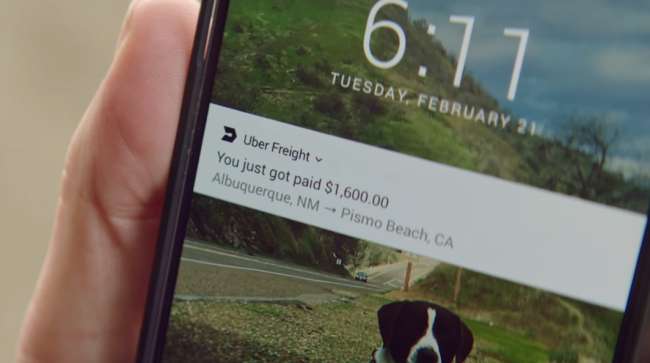Uber Freight App Rolls Into California, Arizona, Chicagoland

Uber Freight, which officially launched in May as a way for short-haul truckers to more easily book their loads, is making a big national push after a test run in Texas.
Truckers will be able to book freight pick-ups in California, Arizona, Georgia, the Carolinas and around the Chicago area, the company announced in a blog post Aug. 3. The rollout will take a few months. The Uber Freight app also will begin proactively suggesting loads to truckers based on their past routes and deliveries.
“We aren’t releasing specific numbers on carriers and shipments, but since we started testing with Texas truckers in January we’ve seen a tenfold increase in load volumes,” Bill Driegert, director of Uber Freight, told USA Today.
Traditionally, truckers have used brokers to schedule their routes. But with the advent of smartphones and algorithms, that task can now be handled by an app.
The space is getting hot. Seattle-based Convoy, which launched its trucking app in 2015, recently announced that it had closed a $62 million Series B round with investments from Y Combinator as well as Bill Gates.
Finding a new revenue stream in the trucking world makes sense for Uber, which is facing headwinds in both its internal politics (the company is on the hunt for a CEO after co-founder Travis Kalanick was ousted in the wake of a sexual harassment scandal) and its international expansion (Uber’s hopes to rule ride-hailing in China and Russia have devolved into partnerships).
Trucking remains the lifeblood of American commerce, an $800 billion a year business that struggles to find enough drivers to meet demand.
RELATED: Convoy, Uber accelerate push to match carriers with loads via mobile apps
Apps such as Convoy and Uber Freight hope to address a few common concerns of drivers, which include transparency and efficient in payments as well as route scheduling that gets them home faster.
“There are a variety of companies out there calling themselves the ‘Uber of freight,’ but we feel there are nuances in the transportation market that we are uniquely well suited to solve,” says Eric Berdinis, product leader on Uber Freight.
“In freight, you have a similar story to what you had with taxis,” he says. “There’s little visibility into where loads or trucks are, and it’s an error prone process that often leaves drivers with the short end of the stick, missing shipments or being short-changed on fees.”
While Uber Freight is trying to empower truck drivers, the company’s very own Uber ATG trucks division, formerly known as Otto, is working hard on self-driving technology that would find them monitoring a truck’s progress on the highway from inside the cab.
“We’ve never said we’re going to remove (truck) drivers,” says Berdinis. “Our (two) teams have very different focuses, and different problems to solve.”
Distributed by Tribune Content Agency, LLC



